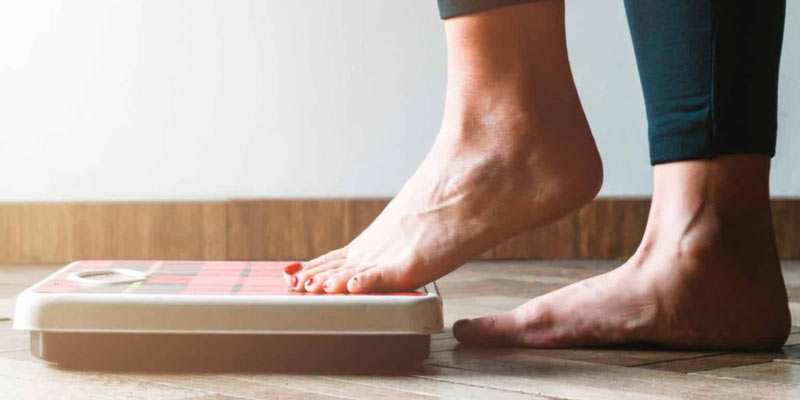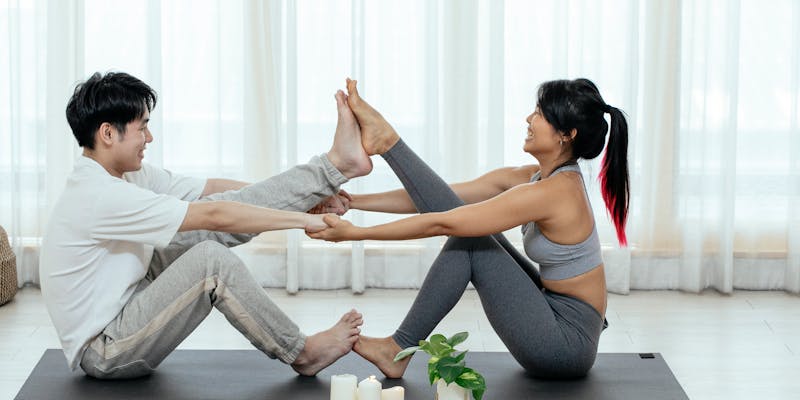Avoid Joint Strain by Learning to Jump Rope :
Oct 11, 2024 By Isabella Moss
Many people know that jumping rope is an excellent way to get a high-intensity physical workout. It improves your aerobic ability and helps you get better at balance, coordination, and speed. However, if you don't do this exercise right, the high-impact, repeated nature of it can hurt your joints. If you want to avoid joint pain as much as possible, read this article.
Jumping Rope Benefits: A lot of people who like to work out choose to jump rope because it is good for them in many ways. A lot of exercise can help your heart stay healthy, make your lungs more robust, and give you more long-term energy. Many types of muscles are worked out when you jump rope. This makes you firmer and smoother.People know that skipping rope is good for them because it makes their hearts and lungs stronger. This sport is like running for a few miles in a short amount of time and can help you get in shape quickly. It's also easy to add to different workout plans, which gives you freedom and comfort.Causes of Skipping Rope:Even though jumping rope is good for you, it can be not good for you if you don't do it correctly. One of the main worries is that the joints might get stressed. The repeated pressure on the knees, ankles, and hips can be painful or make conditions worse than were already there. It can a cause other injuries like Shin splints, tendinitis, and other overuse injuries are common problems. To avoid these issues, you need to know the right way to do things and make changes to lessen the stress on your joints.

5 Reasons Your Joints Hurt After Jumping Rope:Pre-Existing Condition:People who already have joint pain from osteoarthritis or falls may feel it worse when they jump rope. Getting hit over and over and worrying can make these conditions worse and cause more pain. Should you have had knee problems in the past, you should talk to a doctor before starting to jump rope. Take a look at your health and let you know what changes or tips will help you stay safe and calm.Improper Form:If you skip rope the wrong way, it can make your joint pain worse. When you fall hard or jump too high, for example, it can make joint pain worse. Not having a good balance or putting your feet in the wrong place can also make your worry worse and hurt you.Overtraining:People can get too fit if they jump rope too often or too much. Overtraining hurts your bones and muscles. The pain and tiredness this causes are tangible. Allow your body time to rest and heal after jumping rope. You can begin by doing short, easy workouts. Increase their strength and length of time as they get used to them. When you sit down and then work out, your joints won't get too tired, which will help them heal faster.High Impact on Joints:People with weak joints may find it hard to juggle because the rope moves around a lot. Because jumping makes you move quickly, it can hurt your knees, feet, and hips. If you use gym mats or ground with pillows, this effect might be lessened. Hitting the gym and skipping rope back and forth is another way to stay fit while making your joints feel better.Advancing Too Soon:You could hurt your joints or get hurt in other manners if you jump off the rope too quickly. It is possible to pull your knees if you do specific movements or workouts before building a good base.It would help if you started jumping rope slowly so that your whole body gets used to it before you go fast. Add more moves slowly so they get harder and last longer. Start with manageable levels and jumps. Under these slow growths, joint pain is much less likely to happen.Who Should Avoid Skipping Rope?Some people shouldn't jump rope as well and should be very careful when they do because it could hurt them. People who have significant joint problems, have had surgery recently, or have certain illnesses that affect joint health should be extra careful. If you have terrible pain, weak joints, or broken bones, you might not want to hit the rope hard.Before you start a new fitness plan, particularly one that is as hard as skipping rope, you should talk to your doctor. Based on your present circumstances, they will tell you what to do and, if needed, allow you to find other safe ways to work out.
 Precautions and Tips to Avoid Jump Rope Injuries:Always do warmup:
Precautions and Tips to Avoid Jump Rope Injuries:Always do warmup:
Watch out not to hurt yourself when you jump rope. Always do a complete warm-up before you work out to get your muscles and joints ready. Your blood flow goes up just by being warm. Jump jacks, active stretches, or light running can help you get ready to jump rope.Warm-up and wear the right shoes to protect your joints. When you do things that have a lot of force, you need shoes that can soften and absorb shock. When you have joint pain, jumping around helps. If you wear the right shoes, your workouts will be better, and your joints will not hurt.Jump on Soft Surfaces:Pick the right length of rope to avoid getting hurt while jumping. It can be hard on your joints on concrete and other hard surfaces. This can hurt you or make them pull over time. A soft floor with cushions or rubber mats is best if you can find one. These can ease some of the stress on your joints, making them feel better.It might also help while working out on different surfaces. Changing flooring or gym chairs can help you relax and feel supported. Your eyes can keep your joints healthy and have a more significant time. It could be more fun and good for you to work out this way.Maintain Good Form:To keep the joints from getting hurt, it's vital to use the proper form when you jump rope. Do small, measured jumps instead of big, powerful ones to keep your form. Take care to land on your foot and keep your knees slightly bent so that you can better handle the pressure. This way of doing things is better for the joints because it spreads out the effects of each hop better.Keep an eye on your balance while you work out. This will also help you avoid getting hurt. Hold your entire body upright, and don't lean too far forward or backward. This will keep your joints from getting too stressed. Good form will help you get more out of the exercises while saving your joints from having to endure extra stress.Conclusion:Jumping rope can be an excellent and valuable form of exercise, but it can also be dangerous if you ignore your joint health. If you know the pros and cons of jumping rope and take the proper safety measures, you can enjoy all of its benefits while lowering your risk of creating joint pain or damage. Focusing on proper form, using the right tools, and giving yourself enough time to recover during your jump rope routine can help you keep up a healthy and effective exercise routine.

5 High-Calorie-Burning Workouts Better Than Running

Managing Acne-Prone Skin: Causes and Care Tips

Embarking on a Journey Towards Successful Weight Loss

Adult Acne: Why Am I Still Breaking Out a Decade Past Puberty?

The Step-by-Step Guide for Perfecting Your Self-Tanning Technique

Exploring the Potential of Mushrooms in Managing High Blood Pressure

Does Sleeping More Improve the Look of Dark Circles?


